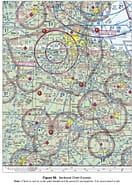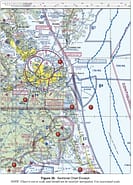is required to file a flight plan. must use a visual observer. is required to receive ATC authorization.
Understanding Airspace
Home/Understanding Airspace/Page 2UAV Campus | Remote Pilot FAA Exam Prep for Drones Latest Questions
Shaded Magenta. Shaded Blue. Dashed Magenta.
4000 feet AGL. 1200 feet AGL. 1200 feet MSL.
when the weather minimums are below basic VFR. when the associated control tower is in operation. when the associated Flight Service Station is in operation.



